You can easily remove water spots from your phone's camera using simple methods. Start with a microfiber cloth, gently wiping in circular motions. For stubborn spots, try distilled water or a specialized lens cleaning solution. Rubbing alcohol on a cotton swab can tackle tougher marks. Compressed air spray can dislodge droplets, while a vinegar-water solution offers a natural alternative. Lens cleaning pens provide precision, and the rice absorption technique helps with moisture. If DIY methods fail, consider a professional camera cleaning service. These techniques will help you restore your camera's clarity and capture crisp, spot-free photos.
Microfiber Cloth Method
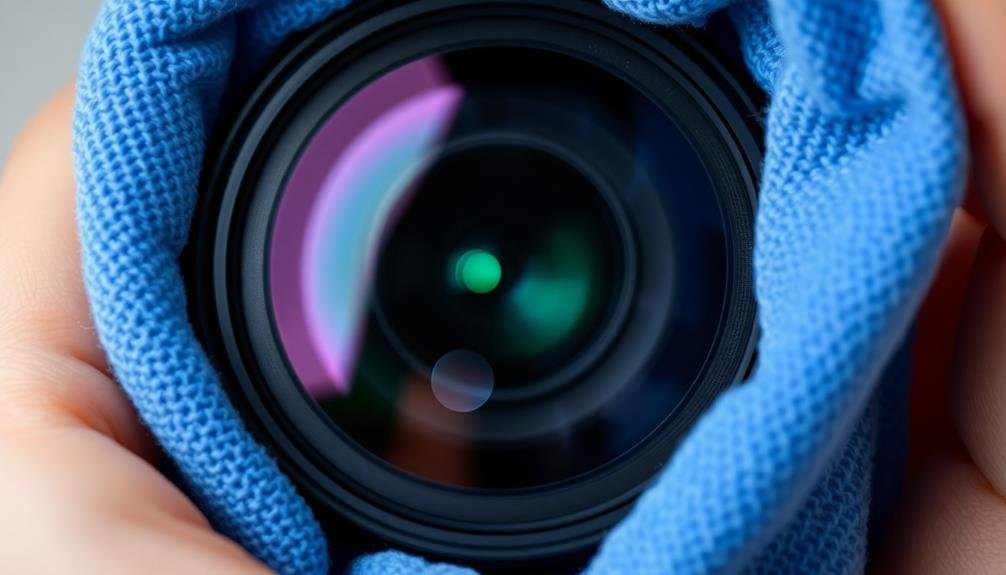
While water spots on your phone camera can be frustrating, the microfiber cloth method offers a simple solution. This technique is quick, effective, and doesn't require any special chemicals or tools.
Start by obtaining a clean, soft microfiber cloth. These cloths are designed to be gentle on delicate surfaces and won't scratch your phone's camera lens. Gently wipe the lens in a circular motion, applying light pressure. Be sure to cover the entire surface area, paying extra attention to visible water spots.
If the spots persist, slightly dampen a corner of the cloth with distilled water. Use this damp section to wipe the lens, followed by the dry portion to remove any remaining moisture. Don't use tap water, as it can leave mineral deposits.
For stubborn spots, create a solution of equal parts distilled water and white vinegar. Dip a corner of the cloth into this mixture, wring out excess liquid, and gently clean the lens. Follow up with a dry section of the cloth to buff the surface.
Remember to clean your microfiber cloth regularly to maintain its effectiveness and prevent transferring dirt back onto your camera lens.
Distilled Water Rinse
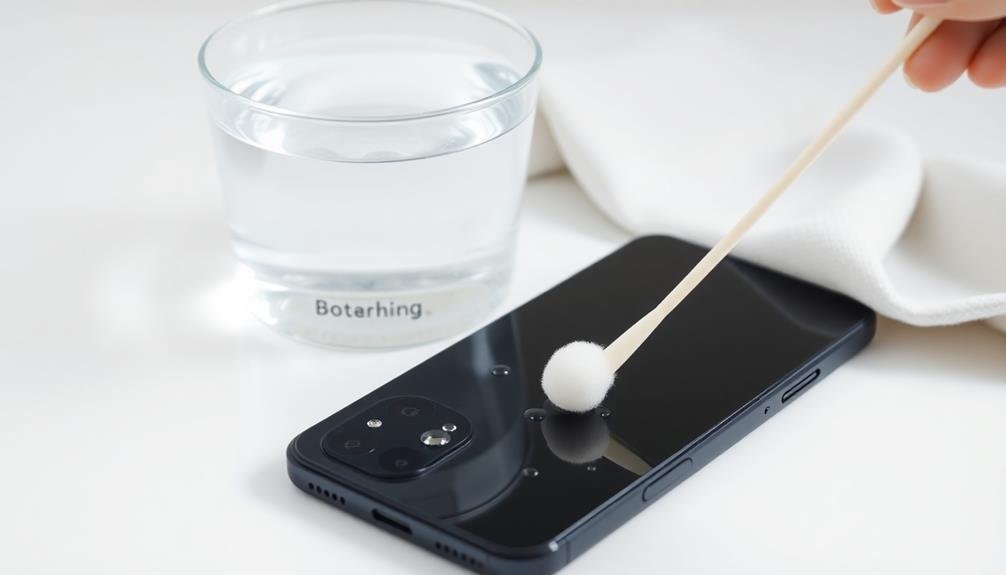
You can effectively clean your phone's camera lens using distilled water, which offers a gentle yet thorough cleaning technique.
Unlike tap water, distilled water doesn't contain minerals that could leave residue or cause additional spots on the lens.
Gentle Cleaning Technique
A gentle approach to removing water spots from your phone's camera lens involves using distilled water. This method is effective and safe for your device.
Start by powering off your phone and removing any case or cover. Prepare a small bowl of distilled water and a soft, lint-free microfiber cloth.
Dip a corner of the cloth into the distilled water, making sure it's damp but not soaking wet. Gently wipe the camera lens in a circular motion, applying minimal pressure. Be careful not to let excess water seep into the phone's crevices.
After a few gentle wipes, use a dry part of the cloth to buff the lens, removing any remaining moisture.
If water spots persist, you can slightly increase the cleaning intensity by adding a drop of mild, unscented dish soap to the distilled water. Mix it well, then repeat the process.
Always finish by wiping with a clean, dry part of the cloth to guarantee no residue remains.
Remember to be patient and avoid using excessive force. If you're uncomfortable cleaning the lens yourself, consider seeking help from a professional phone repair service.
Mineral Deposit Prevention
After cleaning your phone's camera lens, it's important to prevent future water spots from forming. One effective method is to use distilled water for a final rinse. Unlike tap water, distilled water doesn't contain minerals that can leave residue on your lens.
To use this technique, simply dip a clean microfiber cloth in distilled water and gently wipe the camera lens. This will remove any remaining cleaning solution and provide a spot-free finish. Make sure to use a fresh, lint-free cloth to avoid introducing new particles to the lens surface.
You can also create a DIY cleaning solution using distilled water and isopropyl alcohol in equal parts. This mixture helps prevent mineral deposits and evaporates quickly, reducing the risk of water spots.
For ongoing protection, consider applying a hydrophobic lens coating. These coatings repel water and make it easier to clean your camera lens in the future. You can find specialized products designed for smartphone cameras or opt for general-purpose lens coatings.
Distilled vs. Tap Water
When it comes to cleaning your phone's camera lens, the choice between distilled and tap water can make a significant difference. Distilled water is free from minerals and impurities that can leave residue on your lens, making it the superior option for cleaning.
To use distilled water effectively, dampen a microfiber cloth with it and gently wipe the camera lens. The lack of minerals in distilled water means it'll evaporate without leaving spots or streaks. This method is particularly useful if you've already got water spots on your lens.
In contrast, tap water contains various minerals and chemicals that can leave deposits on your camera lens when it dries. These deposits can create water spots and potentially damage the lens coating over time. If you must use tap water, be sure to dry the lens thoroughly and quickly with a clean microfiber cloth to minimize spotting.
While distilled water is ideal, it's not always readily available. In a pinch, you can use bottled water or filtered water as alternatives. They're not as pure as distilled water but are still better than untreated tap water for cleaning your phone's camera lens.
Lens Cleaning Solution Technique
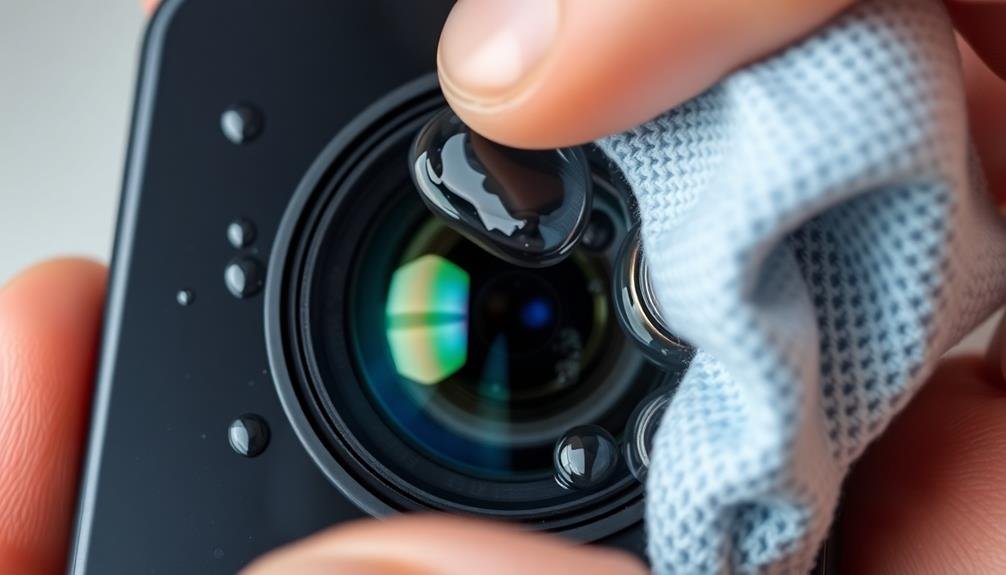
When using a lens cleaning solution, you'll want to choose one specifically designed for camera lenses to avoid damaging your phone's camera.
Apply a small amount of the solution to a microfiber cloth, not directly on the lens, and gently wipe in circular motions.
After cleaning, use a dry part of the cloth to remove any remaining moisture, ensuring your camera lens is completely dry before use.
Choosing Appropriate Cleaning Solution
The key to effectively removing water spots from your phone camera lies in selecting the right cleaning solution.
You'll want to choose a product specifically designed for cleaning camera lenses or electronic devices. Avoid harsh chemicals or abrasive solutions that could damage your phone's delicate components.
Look for alcohol-based lens cleaners, as they're effective at dissolving water spots and evaporate quickly without leaving residue. Isopropyl alcohol (70-90%) is a good option, but make certain it's diluted properly.
You can also use pre-moistened lens cleaning wipes for convenience.
If you prefer a DIY approach, mix equal parts distilled water and white vinegar. This solution is gentle yet effective at breaking down mineral deposits.
Alternatively, create a mixture of one part dish soap to eight parts water for a mild cleaning solution.
Whatever you choose, always test the solution on a small, inconspicuous area first.
Remember that less is more when it comes to cleaning solutions. Use only a small amount to avoid excess liquid seeping into your device.
Always pair your chosen solution with a microfiber cloth for best results.
Application and Drying Process
A gentle touch is vital when applying lens cleaning solution to your phone's camera.
Start by placing a small drop of the solution on a microfiber cloth, avoiding direct application to the lens. Carefully wipe the lens in a circular motion, starting from the center and moving outwards. Don't apply excessive pressure, as this could damage the lens or its coating.
After wiping, use a clean, dry part of the microfiber cloth to remove any remaining moisture. Gently buff the lens in circular motions until it's completely dry. If you notice any streaks or residue, repeat the process with a fresh section of the cloth.
Allow the lens to air dry for a few minutes before using your phone's camera. This guarantees that any microscopic residue evaporates completely.
If you're in a hurry, you can use a can of compressed air to speed up the drying process. Hold the can about 6 inches away from the lens and spray in short bursts. Remember to keep the can upright to prevent liquid propellant from escaping onto the lens.
Rubbing Alcohol Application
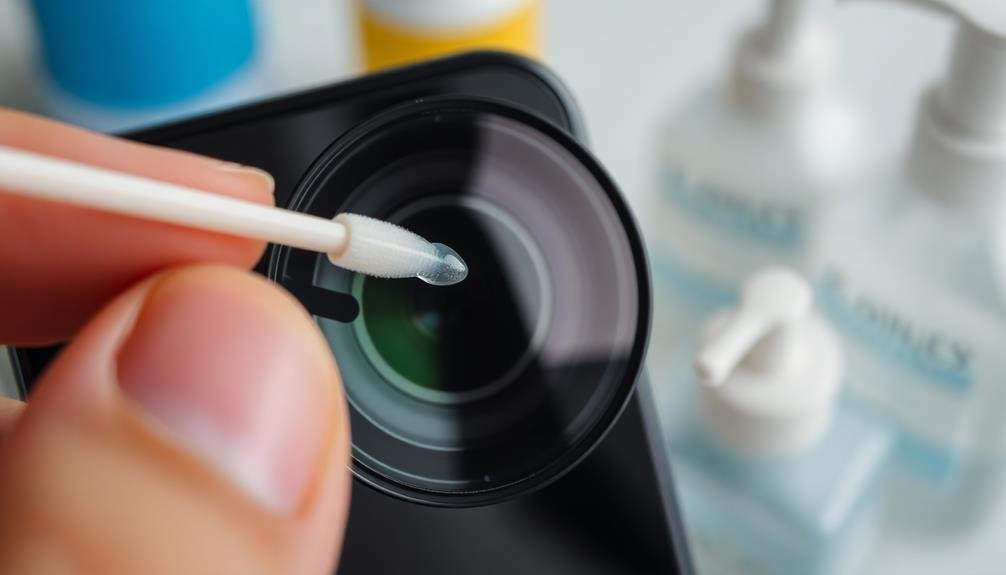
Applying rubbing alcohol can effectively remove stubborn water spots from your phone's camera lens. To use this method, you'll need isopropyl alcohol with a concentration of at least 70%.
First, power off your device to prevent any potential damage. Then, dampen a microfiber cloth or cotton swab with a small amount of rubbing alcohol. Gently wipe the camera lens in circular motions, focusing on the areas with water spots.
Be careful not to apply excessive pressure or oversaturate the cloth, as this could damage the lens or allow liquid to seep into your phone.
After cleaning, use a dry part of the microfiber cloth to remove any residual alcohol and polish the lens. Give your phone a few minutes to air dry completely before powering it back on.
If you're dealing with particularly stubborn spots, you can repeat the process, but avoid doing this too frequently as it may wear down the lens coating over time.
Remember to always test this method on a small, inconspicuous area first to verify it doesn't cause any adverse reactions with your phone's specific lens coating.
Compressed Air Spray

Many smartphone users find compressed air spray to be a quick and effective solution for removing water spots from camera lenses. This method is particularly useful for dislodging water droplets without physically touching the lens, reducing the risk of scratches or smudges.
To use compressed air spray, you'll need to hold the can upright and about 6 inches away from your phone's camera lens. It's essential to maintain this distance to prevent the propellant from freezing the lens surface. Short, controlled bursts of air are more effective than prolonged spraying. As you release the air, move the nozzle in a circular motion to cover the entire lens area.
After spraying, inspect the lens closely. If water spots persist, you may need to repeat the process. For stubborn spots, try alternating between compressed air and a microfiber cloth. Remember to cap the lens when not in use to prevent future water spots.
While compressed air is generally safe, avoid using it excessively, as prolonged exposure to the cold air can potentially damage your phone's components. Always read the manufacturer's instructions before using compressed air on your device.
Toothpaste Spot Removal

While compressed air offers a hands-off approach, toothpaste presents a more hands-on method for tackling stubborn water spots on your phone's camera lens. You'll need non-abrasive, white toothpaste and a soft microfiber cloth for this technique.
Start by applying a small amount of toothpaste to the lens. Using gentle, circular motions, rub the toothpaste over the water spots. Be careful not to apply too much pressure, as this could scratch the lens. After about 30 seconds of rubbing, use a damp cloth to wipe away the toothpaste. Finish by drying the lens with a clean, dry part of the cloth.
Here's a quick guide to help you through the process:
| Step | Action | Duration | Tips |
|---|---|---|---|
| 1 | Apply toothpaste | 5 seconds | Use a tiny amount |
| 2 | Rub gently | 30 seconds | Circular motions |
| 3 | Wipe with damp cloth | 10 seconds | Remove all residue |
| 4 | Dry with clean cloth | 5 seconds | Use lint-free cloth |
If the water spots persist, you can repeat the process. However, if you don't see improvement after a second attempt, it's best to try a different method or seek professional help to avoid potential damage to your phone's camera lens.
Vinegar and Water Solution
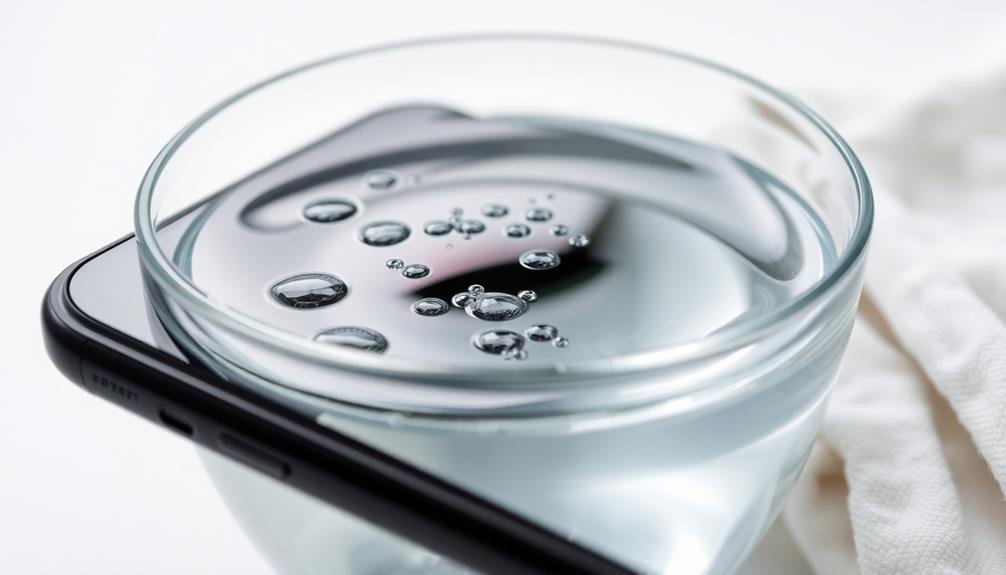
A simple yet effective method for removing water spots from your phone's camera lens involves using a vinegar and water solution. This mixture's acidic properties help dissolve mineral deposits that cause water spots, restoring clarity to your lens.
To create the solution, mix equal parts white vinegar and distilled water in a small bowl. Dip a soft, lint-free microfiber cloth into the mixture, making certain it's damp but not soaking wet. Gently wipe the camera lens in circular motions, paying special attention to areas with visible water spots.
After cleaning, use a dry portion of the cloth to remove any excess moisture. Don't apply too much pressure, as this could damage the lens coating. For stubborn spots, you may need to repeat the process.
Once you've finished, inspect the lens under good lighting to verify all spots are gone. If you're satisfied with the results, take a test photo to confirm the clarity has improved.
Remember to clean your phone's camera lens regularly to prevent water spot buildup and maintain peak image quality for your photos and videos.
Lens Cleaning Pen Usage
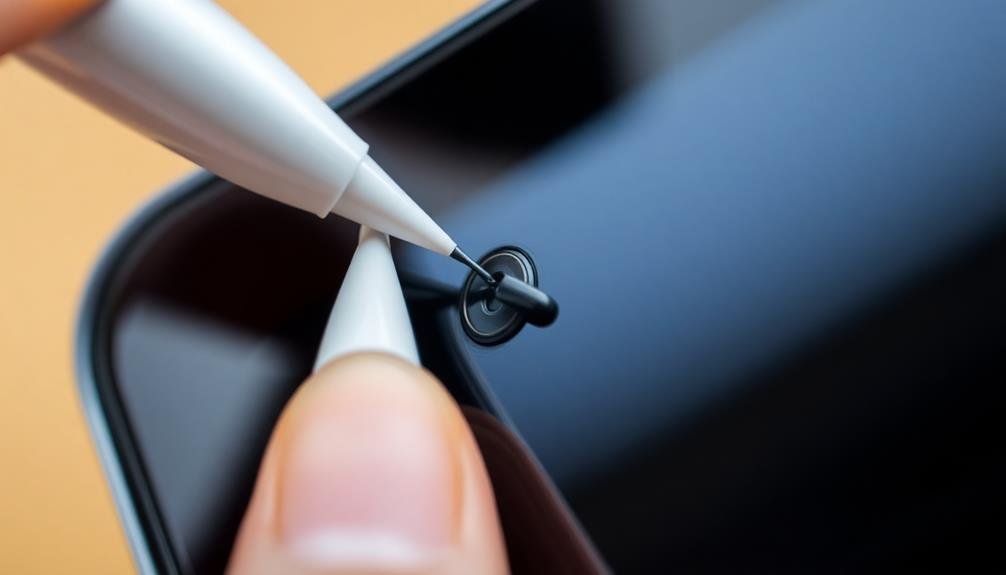
When using a lens cleaning pen on your phone's camera, apply gentle circular motions to effectively remove water spots.
You'll want to maintain a light touch, avoiding excessive pressure that could damage the lens.
Remember to clean the entire lens surface systematically, ensuring you don't miss any spots while being careful not to overwork any particular area.
Gentle Circular Motions
Employing a lens cleaning pen can be an effective method for removing water spots from your phone's camera. When using this tool, it's essential to apply gentle circular motions for the best results.
Start by holding your phone steady with one hand and the lens cleaning pen in the other. Lightly touch the pen's tip to the camera lens and begin making small, circular movements.
As you work, gradually increase the size of the circles while maintaining a gentle pressure. This technique helps to evenly distribute the cleaning solution from the pen and lift any stubborn water spots or debris.
Be sure to cover the entire lens surface, paying extra attention to the edges where water spots often accumulate.
Don't rush the process; take your time to guarantee thorough cleaning. If you encounter persistent spots, resist the urge to apply more pressure. Instead, repeat the gentle circular motions a few more times.
This patient approach will help prevent any potential scratching or damage to the lens coating. Once you've completed the circular motions, use the pen's brush end to sweep away any remaining particles gently.
Avoid Excessive Pressure
While gentle circular motions are effective, it's important to remember that excessive pressure can damage your phone's camera lens. When using a lens cleaning pen, apply light pressure to avoid scratching or cracking the delicate glass surface. These pens are designed to be gentle yet effective, so let the tool do the work for you.
Hold the cleaning pen at a slight angle and use short, controlled strokes across the lens. Don't press down forcefully or drag the pen across the surface. Instead, allow the pen's soft tip to lift away dirt and water spots with minimal contact.
If you encounter stubborn spots, resist the urge to scrub harder. Instead, repeat the process a few times, allowing the cleaning solution in the pen to break down the residue gradually.
Remember that your phone's camera lens is a precision optical component. Treating it roughly can misalign internal elements or cause microscopic scratches that affect image quality.
Rice Absorption Technique
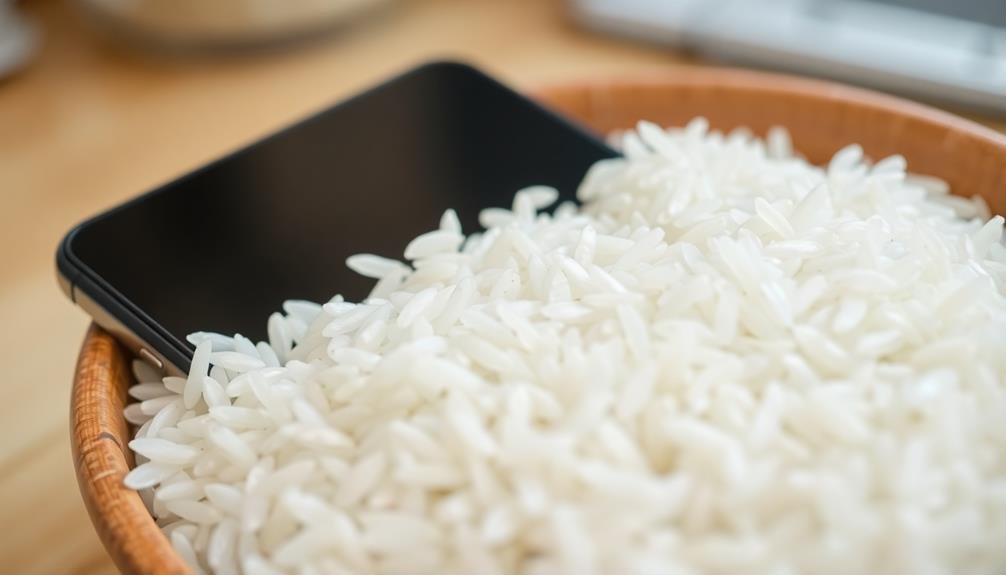
One of the most popular home remedies for dealing with water-damaged electronics is the rice absorption technique. You can use this method to remove water spots from your phone's camera lens as well.
Start by turning off your device and removing any protective cases or covers. Gently pat the camera area dry with a soft, lint-free cloth to remove excess moisture.
Next, find a container large enough to fit your phone and fill it with uncooked rice. Submerge your device in the rice, making sure the camera lens is completely covered. Leave it there for 24 to 48 hours, allowing the rice to absorb the moisture. The rice acts as a natural desiccant, drawing out water from small crevices and components.
After the designated time, remove your phone from the rice and check the camera lens. If water spots are still visible, gently clean the lens with a microfiber cloth.
Don't forget to remove any rice grains that may have gotten stuck in your phone's ports or openings. While this method isn't guaranteed to work every time, it's a safe and inexpensive option to try before seeking professional help.
Professional Camera Cleaning Service

If home remedies don't solve your water spot issue, it's time to contemplate a professional camera cleaning service.
These experts have the tools and know-how to tackle stubborn water spots without damaging your phone's delicate camera lens. They'll use specialized cleaning solutions and techniques to restore your camera's clarity.
When considering a professional service, look for technicians who specialize in smartphone repairs. They'll understand the unique challenges of cleaning phone cameras and can often complete the job quickly.
While it may cost more than DIY methods, it's a safer option if you're unsure about handling the cleaning yourself.
Here's what you can expect from a professional camera cleaning service:
- Thorough inspection of your phone's camera lens
- Use of high-grade, anti-static cleaning solutions
- Gentle cleaning with specialized microfiber tools
- Testing of camera functionality post-cleaning
Frequently Asked Questions
Can Water Spots on Phone Cameras Cause Permanent Damage?
Water spots on your phone camera can potentially cause permanent damage if left untreated. They may corrode the lens coating or seep into internal components. You should address the issue promptly to prevent long-term harm to your device.
How Often Should I Clean My Phone's Camera Lens?
You should clean your phone's camera lens regularly, at least once a week. If you use your phone frequently or in dusty environments, clean it more often. A quick wipe with a microfiber cloth can keep your lens spotless.
Are There Any Preventive Measures to Avoid Water Spots?
You can prevent water spots on your phone's camera by keeping it dry. Use a waterproof case, avoid moisture-heavy environments, and wipe your phone immediately if it gets wet. Don't forget to clean the lens regularly with a microfiber cloth.
Do Screen Protectors Help Prevent Water Spots on Camera Lenses?
Screen protectors don't directly help prevent water spots on camera lenses. They're designed for your phone's screen, not the camera. To protect your lens, you'll need a separate camera lens protector or cover specifically made for that purpose.
Can Water Spots Affect the Quality of Photos Taken With My Phone?
Yes, water spots can definitely affect your photo quality. They'll create blurry areas, distort colors, and reduce overall clarity. You'll notice unwanted spots or hazy patches in your images, particularly when shooting in bright light conditions.
In Summary
You've now got a variety of methods to tackle those pesky water spots on your phone's camera lens. From simple microfiber cloths to specialized cleaning solutions, you're well-equipped to keep your lens crystal clear. Remember, prevention is key, so try to keep your phone dry whenever possible. If these DIY methods don't work, don't hesitate to seek professional help. With these tips, you'll be back to taking stunning photos in no time!

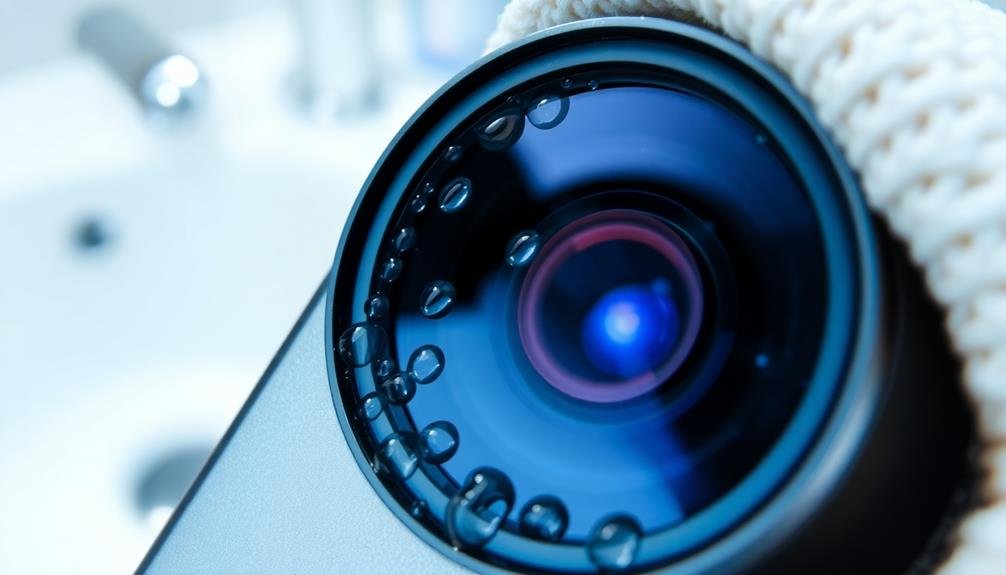
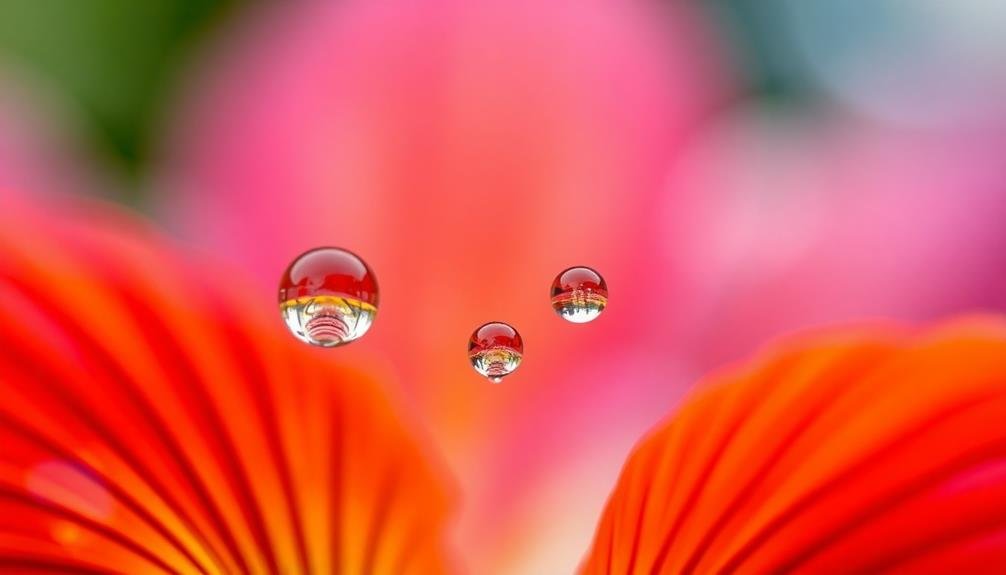
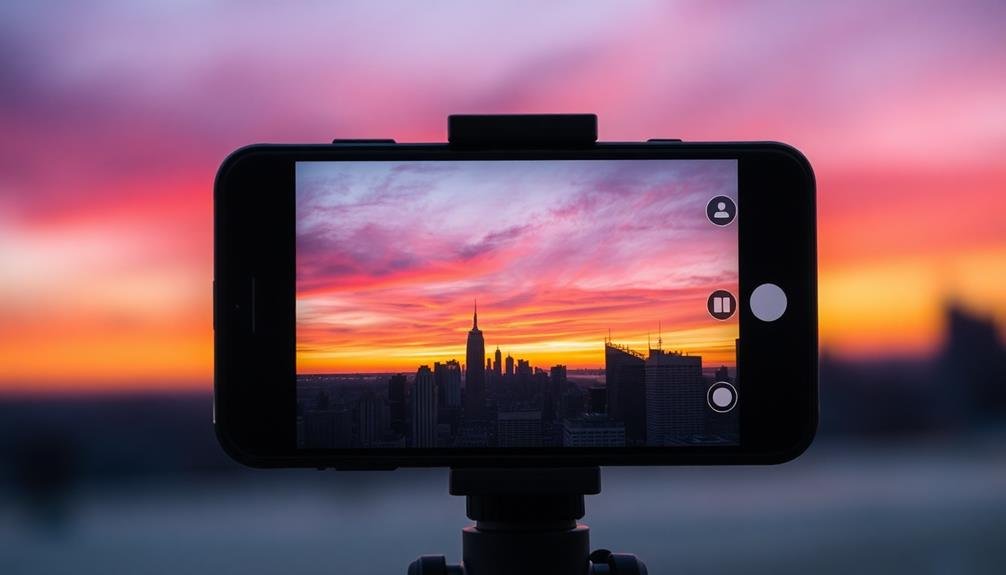

Leave a Reply